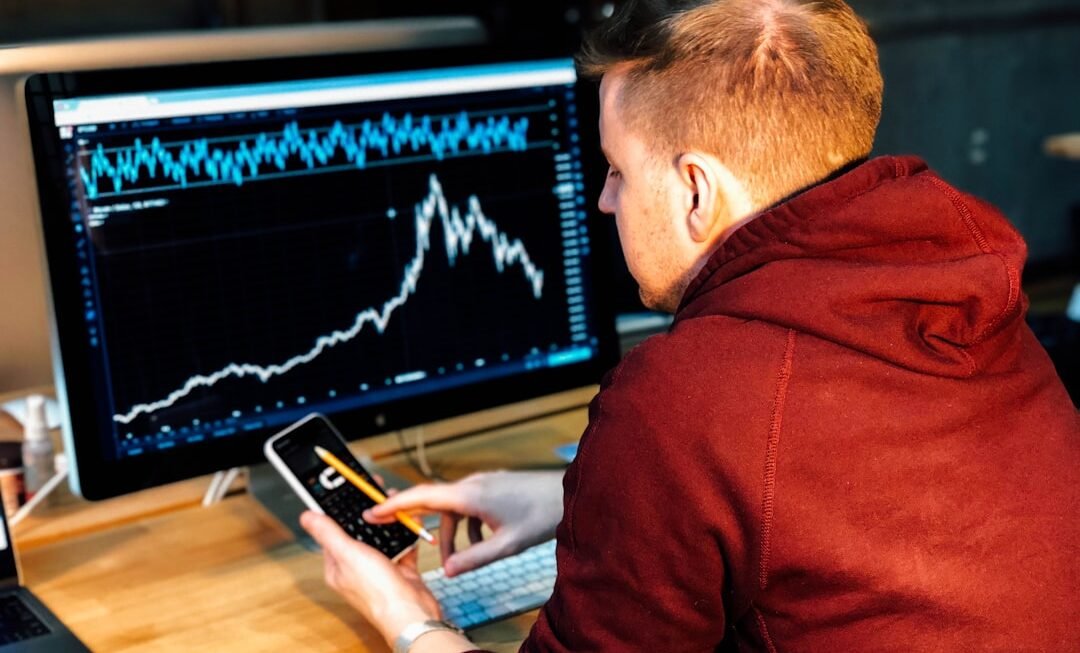High-frequency trading (HFT) represents a sophisticated and rapidly evolving segment of the financial markets, characterized by the execution of a large number of orders at extremely high speeds. This trading strategy leverages advanced algorithms and high-speed data networks to capitalize on minute price discrepancies that exist for fractions of a second. The rise of HFT has transformed the landscape of trading, shifting the focus from traditional investment strategies to algorithm-driven approaches that can execute thousands of trades in the blink of an eye.
The advent of technology has not only increased the speed of trading but has also introduced complexities that require a deep understanding of both market dynamics and computational techniques. The impact of HFT on market liquidity and volatility has been a subject of extensive debate among financial experts. Proponents argue that HFT enhances market efficiency by narrowing bid-ask spreads and providing liquidity, while critics contend that it can lead to increased volatility and market manipulation.
Events such as the Flash Crash of 2010, where the Dow Jones Industrial Average plummeted nearly 1,000 points in minutes, have raised concerns about the potential risks associated with algorithmic trading. As HFT continues to evolve, it becomes increasingly important to explore the role of machine learning in this domain, as it offers new avenues for improving trading strategies and managing risks.
Key Takeaways
- High-frequency trading (HFT) involves the use of sophisticated algorithms and powerful computers to execute trades at incredibly high speeds.
- Machine learning plays a crucial role in HFT by enabling the development of predictive models that can analyze market data and make rapid trading decisions.
- Data collection and preprocessing are essential steps in HFT, involving the gathering and cleaning of large volumes of market data to feed into machine learning models.
- Feature engineering and model selection are critical in HFT, as they determine the effectiveness of the predictive models used for trading decisions.
- Risk management and regulation are important considerations in HFT, as the rapid and automated nature of trading can pose systemic risks and raise regulatory concerns.
Understanding Machine Learning in High-Frequency Trading
Machine learning (ML) has emerged as a pivotal technology in high-frequency trading, enabling traders to analyze vast amounts of data and identify patterns that would be impossible for humans to discern. By employing algorithms that can learn from historical data, traders can develop predictive models that inform their trading decisions. These models can adapt to changing market conditions, allowing for more responsive and dynamic trading strategies.
The integration of machine learning into HFT is not merely a trend; it represents a fundamental shift in how traders approach market analysis and decision-making. One of the key advantages of machine learning in HFT is its ability to process unstructured data, such as news articles, social media sentiment, and other non-traditional data sources. This capability allows traders to incorporate a broader range of information into their models, enhancing their predictive power.
For instance, natural language processing (NLP) techniques can be employed to gauge market sentiment from news headlines or social media posts, providing traders with insights that go beyond traditional quantitative metrics. As machine learning algorithms continue to evolve, their application in HFT is likely to expand, leading to more sophisticated trading strategies that leverage both structured and unstructured data.
Data Collection and Preprocessing for High-Frequency Trading
The foundation of any successful high-frequency trading strategy lies in robust data collection and preprocessing techniques. In HFT, data is collected from various sources, including market exchanges, financial news outlets, and social media platforms. The sheer volume of data generated in financial markets is staggering; millions of transactions occur every second, producing terabytes of information that must be processed efficiently.
High-frequency traders rely on low-latency data feeds to ensure they have access to real-time information, which is crucial for making split-second trading decisions. Once the data is collected, preprocessing becomes essential to ensure its quality and relevance. This stage involves cleaning the data by removing noise, handling missing values, and normalizing different data types.
For example, raw price data may contain outliers due to erroneous trades or system glitches; these anomalies must be addressed to prevent skewed model predictions. Additionally, time-series data must be transformed into a format suitable for machine learning algorithms, often requiring techniques such as resampling or windowing to create features that capture temporal dependencies. Effective preprocessing not only enhances the accuracy of machine learning models but also significantly reduces the risk of overfitting.
Feature Engineering and Model Selection in High-Frequency Trading
Feature engineering is a critical step in developing machine learning models for high-frequency trading. It involves creating new variables or features from raw data that can improve model performance. In HFT, features might include technical indicators such as moving averages, relative strength index (RSI), or volatility measures derived from historical price movements.
Additionally, traders may incorporate features based on order book dynamics, such as bid-ask spreads or order flow imbalance, which can provide insights into market sentiment and potential price movements. Model selection is equally important in the context of high-frequency trading. Various machine learning algorithms can be employed, ranging from traditional statistical methods like logistic regression to more complex models such as neural networks or ensemble methods like random forests and gradient boosting machines.
The choice of model often depends on the specific characteristics of the data and the trading strategy being employed. For instance, deep learning models may excel in capturing intricate patterns in large datasets but require substantial computational resources and careful tuning to avoid overfitting. Conversely, simpler models may offer faster training times and easier interpretability but might lack the capacity to capture complex relationships within the data.
Risk Management and Regulation in High-Frequency Trading
Risk management is a paramount concern in high-frequency trading due to the rapid pace at which trades are executed and the potential for significant financial losses within short timeframes. Effective risk management strategies must account for various factors, including market volatility, liquidity risk, and operational risk associated with algorithmic trading systems. High-frequency traders often employ real-time risk monitoring systems that analyze their positions continuously and trigger alerts when predefined risk thresholds are breached.
Regulatory scrutiny surrounding high-frequency trading has intensified in recent years as regulators seek to mitigate potential risks associated with algorithmic trading practices. Regulations such as the European Union’s Markets in Financial Instruments Directive II (MiFID II) and the U.S. Securities and Exchange Commission’s (SEC) rules aim to enhance transparency and reduce systemic risks posed by HFT firms.
These regulations require firms to maintain detailed records of their trading activities and implement robust risk management frameworks. Compliance with these regulations not only helps protect market integrity but also fosters trust among investors who may be wary of the implications of high-frequency trading on market stability.
Evaluating the Performance of Machine Learning Models in High-Frequency Trading
Evaluating the performance of machine learning models in high-frequency trading is crucial for determining their effectiveness and reliability. Traditional metrics such as accuracy may not be sufficient due to the unique characteristics of financial markets, where class imbalances can skew results. Instead, traders often rely on metrics like precision, recall, F1 score, and area under the receiver operating characteristic curve (AUC-ROC) to assess model performance comprehensively.
Backtesting is another essential component of performance evaluation in HFT. This process involves simulating trades based on historical data to assess how a model would have performed under real market conditions. Backtesting allows traders to identify potential weaknesses in their strategies and refine their models accordingly.
However, it is important to approach backtesting with caution; overfitting to historical data can lead to misleading results when applied to live trading environments. Robust validation techniques, such as cross-validation or walk-forward analysis, can help mitigate this risk by ensuring that models generalize well to unseen data.
Challenges and Limitations of Machine Learning in High-Frequency Trading
Despite its potential benefits, the application of machine learning in high-frequency trading is not without challenges and limitations. One significant hurdle is the issue of data quality; financial markets are inherently noisy environments where external factors can introduce volatility that may not be captured by historical data alone. This noise can lead to misleading signals for machine learning models, resulting in poor predictive performance.
Another challenge lies in the interpretability of machine learning models. While complex algorithms like deep neural networks may yield impressive results, they often operate as “black boxes,” making it difficult for traders to understand how decisions are made. This lack of transparency can pose risks in high-stakes environments where understanding model behavior is critical for effective risk management.
Furthermore, regulatory requirements may necessitate a level of explainability that certain machine learning models cannot provide easily.
The Future of Machine Learning in High-Frequency Trading
The future of machine learning in high-frequency trading appears promising as advancements in technology continue to reshape the financial landscape. As computational power increases and algorithms become more sophisticated, traders will likely harness even more complex models capable of processing vast datasets with greater efficiency. Innovations such as quantum computing hold the potential to revolutionize algorithmic trading by enabling calculations that were previously infeasible within traditional computing frameworks.
Moreover, the integration of alternative data sources will likely play a pivotal role in shaping future trading strategies. As more non-traditional datasets become available—ranging from satellite imagery to consumer behavior analytics—traders will have unprecedented opportunities to enhance their predictive capabilities through machine learning techniques. However, this evolution will also necessitate ongoing attention to regulatory compliance and ethical considerations surrounding data usage.
In conclusion, while challenges remain in implementing machine learning within high-frequency trading frameworks, its potential for transforming trading strategies cannot be overstated. As technology continues to advance and new methodologies emerge, the intersection of machine learning and high-frequency trading will undoubtedly evolve into an even more dynamic field with far-reaching implications for market participants.












